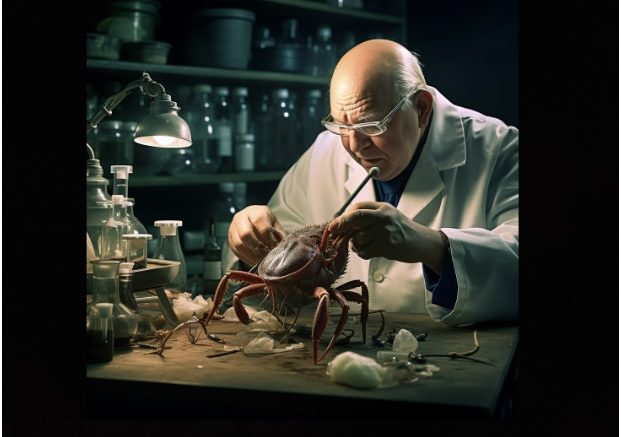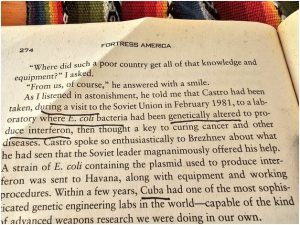by Maryam Henein, The Tenpenny Report:

Here is the amazing conclusion to Part 1 of this story.
In the 1920s, biochemist Florence Seibert identified endotoxins. These molecules line the cell walls in disease-inducing “gram negative” bacteria. They are very large molecular weight LipoPolySaccharide (LPS) with many characteristics similar to natural venoms.
Seibert’s work on what would become intravenous therapy led her to develop a test for the presence of endotoxins that relied on the common European rabbit. The rabbits were inoculated with a substance that could contain a pyrogenic (fever-producing) contaminant. If one was present, the rabbit’s temperature went up.
TRUTH LIVES on at https://sgtreport.tv/
In its time, the “rabbit test” was widely used by pharmaceutical companies and medical device makers. However, the test was costly and cumbersome. Researchers actually were mentally scarred by memories of bunny claws as they tried to stick thermometers up their bunny buts. It was much easier to bleed ancient sea creatures, so the large colonies of rabbits were abandoned and the horseshoe crab became the standard litmus before products could head to market.
According to Geoff Pain, whose 11th cousin once removed is Frederick Barry Bang, co-inventor of the LAL test, companies make a white extract from the blue blood and then freeze-dry it. The LAL can go for $15,000 per quart and the blood is supposedly only used in the test.
Over the years, nonprofit organizations such as Physicians for Responsible Medicine have raised awareness of Big Harma’s role in depleting horseshoe populations. As a result, aquaculture facilities for horseshoe crabs are gaining traction, thus reducing the impact on wild stocks. Recently, the nonprofit Defenders of Wildlife, which is dedicated to the protection of all native animals and plants in their communities, placed an injunction on Charles River Laboratories, a multibillion-dollar pharmaceutical company, to stop the lab’s practice of keeping crabs in holding ponds prior to bleeding them. The crabs cannot spawn in these tanks, thus impacting the Red Knot migratory bird which then has no access to food.
There is also a synthetic alternative, but unlike in some other countries, US regulators have not established standards for industry-wide use. Let’s hope we don’t wipe out horseshoe crabs before we emulate their ancient chemical wisdom. Nonetheless, no other natural substance is known to work as well to detect toxins.
The Power Of E. coli & mRNA Contamination
I wondered the real reason why Big Harma wants to use horseshoe crabs to detect bacteria in the vaccines. Excuse my skepticism, but do they really want to make sure bacteria stay out, or is it to make sure bacteria make it in?
There is a reason why I say this. Let me explain.
Historically, “injection fever” has occurred after patients received shots, and this reaction is explained by a bacterial counterattack. Contamination is not new. Meanwhile, did you know that they use bacteria to make vaccines? E. coli is grown in huge vats almost like you’re fermenting beer.
 Yeast is used to produce the DNA sequence that codes for the protein. For instance, for the COVID-19 vaccine, Pfizer used Escherichia coli, which doubles every 30 minutes, to accelerate replication for plasmid DNA. In other words, Pfizer uses e. coli, to manufacture the DNA used to make the mRNA in their jabs.
Yeast is used to produce the DNA sequence that codes for the protein. For instance, for the COVID-19 vaccine, Pfizer used Escherichia coli, which doubles every 30 minutes, to accelerate replication for plasmid DNA. In other words, Pfizer uses e. coli, to manufacture the DNA used to make the mRNA in their jabs.
“Amplifiable plasmid DNA is unique and it has an origin of replication if you stick it in bacteria.
It will copy itself to several hundred copies in every cell,” says Microbiologist Kevin McKernan.
As an aside, there are several strains of E.coli and some have even been genetically altered. For instance, while this sounds nuts, they even have engineered E. coli to secrete nanobodies in your gut. Wrap your head around that one!
Read More @ TheTenpennyReport.com



